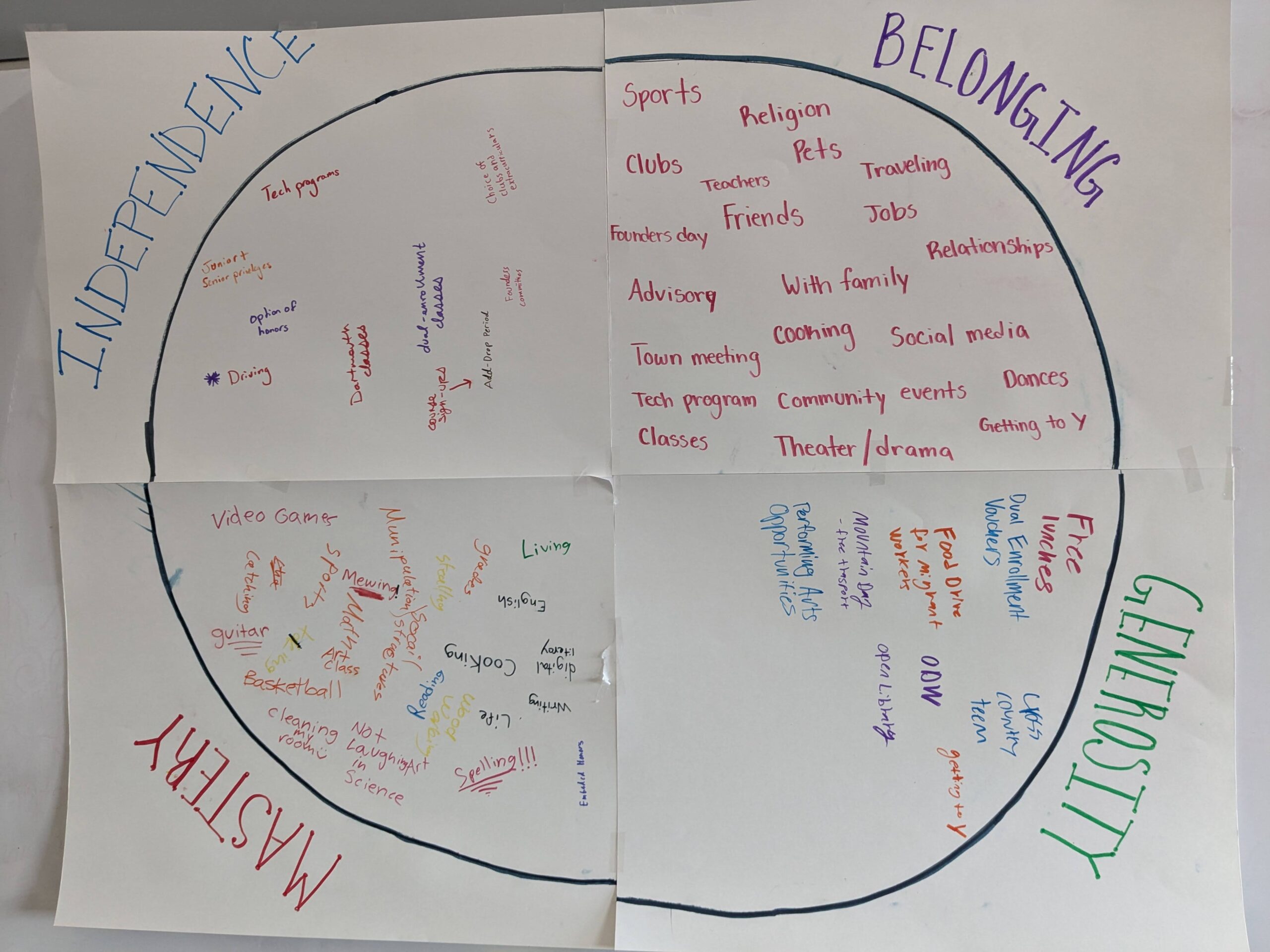Students Use Data Analysis to Find the “Y” and Make a Positive Impact
February 25, 2025

Guest post from TA student Hanae Debo, Class of 2025
It’s hard to get any students to stay after school on a Friday, let alone a half day, let alone on Valentine’s Day. Despite this, twenty TA students across all grades gathered on February 14th with a common goal: to analyze data from the 2023 Youth Risk Behavior Survey (YRBS) in order to identify strengths and concerns of student behavior at TA.
The event was organized and run entirely by members of the Getting to Y club. We led participants through a series of activities before diving into the data, such as the Circle of Courage which has students reflect upon how the TA community fosters independence, mastery, belonging, and generosity. We also emphasized the importance of using a “researchers’ lens” when looking at the data by acknowledging our personal biases and remaining conscious that no individual can know all perspectives, but we should still strive to seek out underrepresented voices.
Then, we looked at the data. Split up into groups, we created a list of our strongest strengths and most concerning concerns. Once we had those lists, we voted on our top three strengths and concerns. The results:
Strengths
- 73% of students are likely to go to a four year college, a community college, or technical school.
- 92% of students believe their parents or guardians think it is wrong or very wrong to vape.
- Too few data to report students who had ever used heroin, methamphetamine, and cocaine.
Concerns
- 32% of females compared to 13% of males reported unwanted sexual behaviors.
- 38% of females compared to 5% of males attempted to lose weight in unhealthy ways.
- 44% of females compared to 22% of males currently drink alcohol and 24% of females compared to 10% of males have engaged in binge drinking in the past 30 days.
Getting to Y’s next steps are to consider the root causes of these concerns and how we can address them. We will host a follow-up event later in the spring—the Community Dialogue Event—that invites adults and students to share their ideas about this. While it can be disheartening to look at this data about TA students, the good news is that we have motivated students who want to understand our struggles and do something about it. Not all schools have that.


